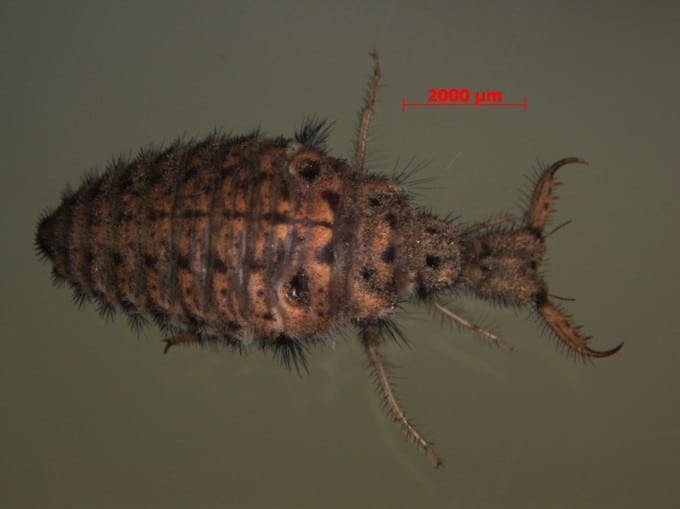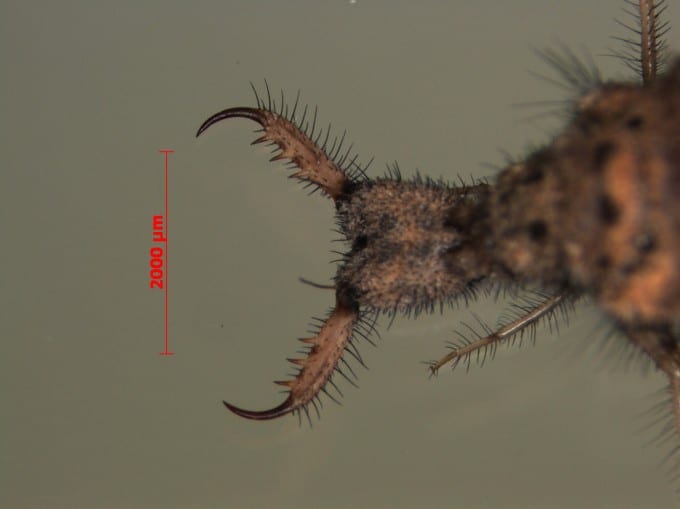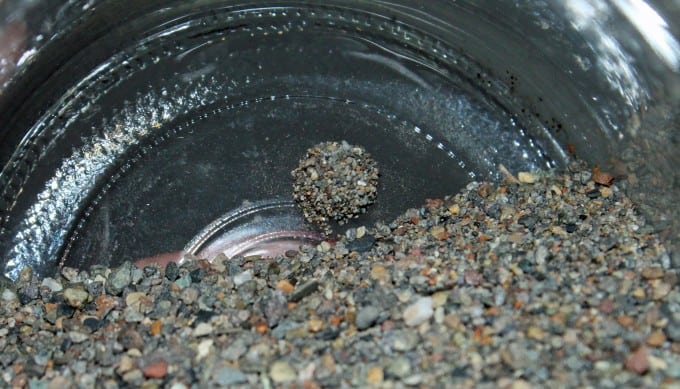
Previously I wrote a blog about an insect known as a “Wormlion.” I suspected this insect to be an Antlion at first. I then figured that not many people knew what an Antlion was so I figured I would blog about them. Antlions are in the order Neuroptera which in English translates into “nerve-wings.” An Antlion is the larval stage of the insect; these are also referred to as “doodle-bugs.” They call them doodle-bugs because when you place these insects on sand or loose dirt, they will crawl backwards making a distinguishable trail and eventually burrow down into the medium. In the wild you can sometimes spot these trails; in this case they are looking for suitable soil in which to excavate their trap. These insects can only crawl backwards. A common name for the adult would be lacewing, there may be others but that’s what I call them. The adults look very similar to damsel flies but the lacewings have clubbed antennae where the damselfly has very small antennae making it easy to distinguish the two.

Antlions have several different tactics to capture prey. Some species will live above ground within leaf litter and ambush prey. Other species will excavate a pit as pictured above. The Antlion uses its prothorax (neck), head and mandibles to flick debris from the pit. Either way the Antlions capture method depends on its large mandibles with hollow projections to grasp prey. In the image below you can see the projections on the mandibles. These hollow projections have canals which enable the Antlion to inject venom into the captured insect. They will then suck the liquid from the insect using the hollow projections. If the prey is large the Antlion will often pull it underneath the soil to help minimize movement. When all the fluid is siphoned out of the insect, the carcass will be flicked out of the pit and the Antlion will fix its pit for new prey.


Once the larva has consumed a number of insects it is now ready to spin a cocoon. It will do this a few inches under the soil. If you have them in a container they will attach the spherical cocoon to the bottom of it as pictured below. The cocoon is created by the Antlion with silk from a spinneret on its posterior end and mixed with the substrate they are in. Once the cocoon is finished it takes about a month for it to develop from pupa into an adult. The development time may differ from species to species but around a month was a common time frame I have found from CA species so far.

These unique insects go through a complete metamorphosis called holometabolism. Stages of holometabolous insects include embryo (egg), larvae, pupa and imago. Honey bees are also holometabolous insects. The Antlion or larval stage is responsible for storing up as much energy (food) as possible to complete metamorphosis into a reproductive adult.
